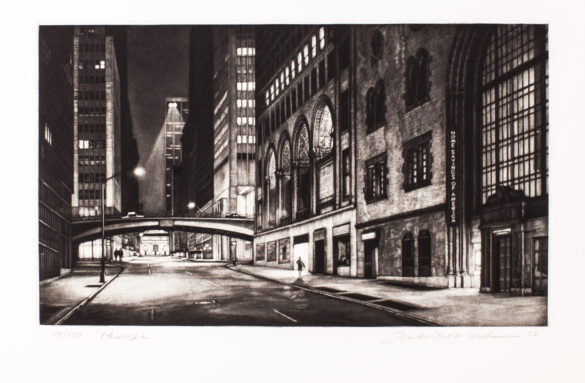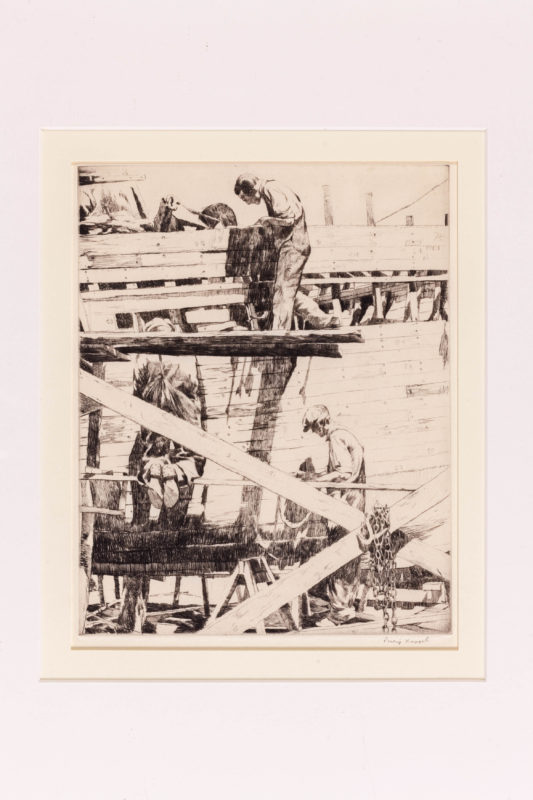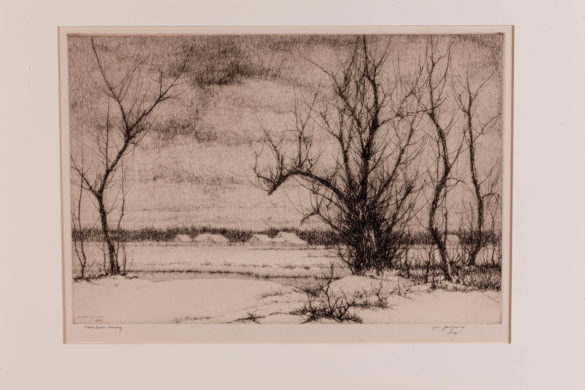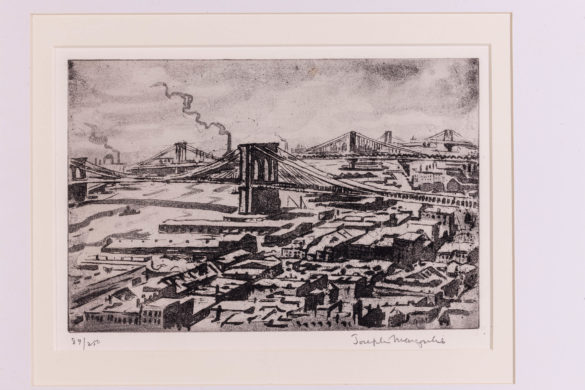WRITTEN BY: SAMANTHA AHNEN, MARKETING INTERN
The Cummer Museum’s latest exhibition Urban Spaces, Open Skies: 20th-Century American Landscape opened nearly two weeks ahead of schedule on July 16. The exhibition, which was originally set to open on July 27, draws mainly from the Cummer Museum’s extensive collection of works on paper, featuring more than 30 prints celebrating modern cities and the timeless charms of the country.

Frederick Mershimer, American (b. 1958), Passage, c. 1993, aquatint, Purchased with funds from the Cornelia Morse Carithers Endowment Fund, AP.1994.1.13
Artists have long captured the changing realities of new metropolises, with their busy streets, skyscrapers, harbors, industries, and workers. Iconic symbols of the American urban boom, such as the Brooklyn Bridge and the skylines of New York City and Chicago, exemplify the rapid change in American landscape during the early 20th-century and inspired artists to document it.

Philip Kappel, American (1901 – 1981), Boat Builders, Essex, 20th-century, etching, Purchased with funds from the Cornelia Morse Carithers Endowment Fund, AP.1992.20.34
In contrast, the nostalgia for an idealized, “simple” way of life during this time is portrayed through through representations of wide open spaces, lakes, forests, and fields. The stillness and serenity of the countryside, often untamed or unmarked by humans, offers a break from chaotic urban life. A new appreciation for the natural American landscape was born from the industrial revolution, which artists expressed beautifully.

Charles Jac Young, American (1880 – 1940), More Snow Coming, c. 1934, etching and drypoint, Purchased with funds from the Cornelia Morse Carithers Endowment Fund, AP.1992.20.49
Urban Spaces, Open Skies: 20th-Century American Landscape will be housed in the Jacobsen Gallery until February 3, 2019. Several events are planned in connection to the exhibition, including a Talks & Tea event, an Art Adventures class for children, and a Classical Concert. Reservations for each event can be made on the Museum website.

Joseph Margulies, American (1896 – 1984), Bridges, 1976, aquatint, Purchased with funds from the Cornelia Morse Carithers Memorial Print Collection, AP.1994.2.3


